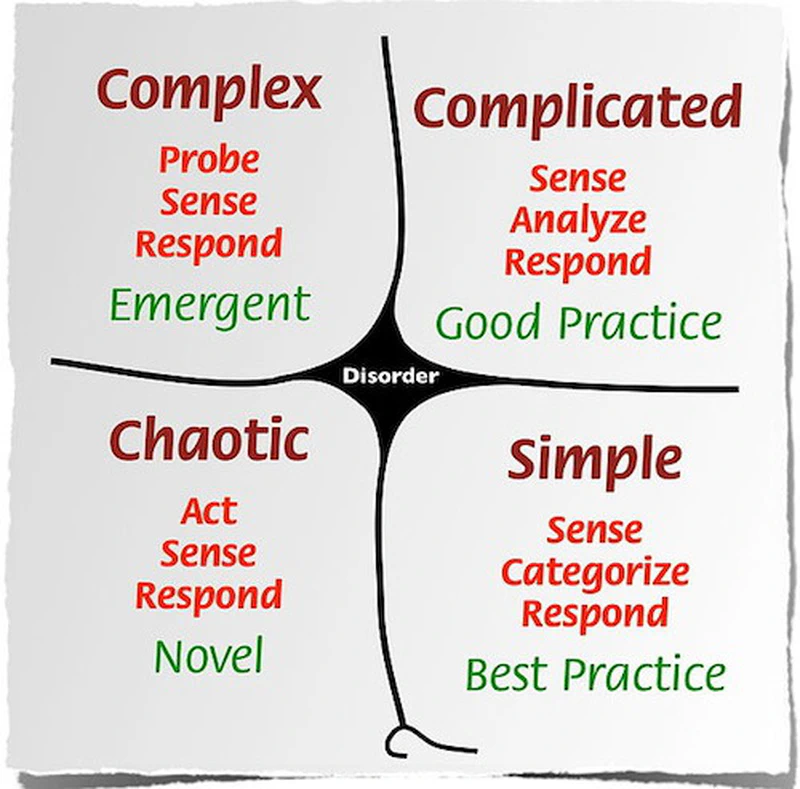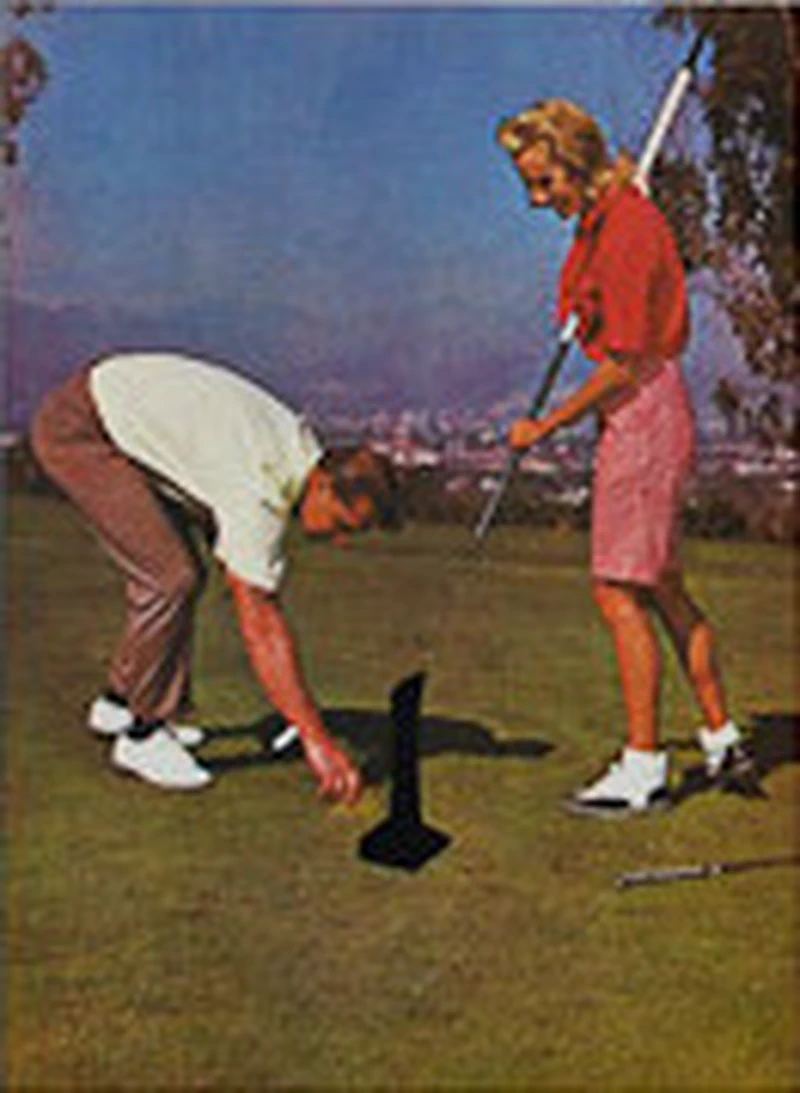I observe a new enthusiasm around Cynefin, but still quite a few misunderstandings or difficulties in adopting it. Not so simple, yes, it’s first a way of understanding the contexts that surround us to then deduce ways of acting. In order to try to make this more intelligible I will pass it through the filter of a story: being a parent and using cynefin to define ways of acting.
First, what is it for?
But first, what is it for? Cynefin is a matrix, a reading grid, that encourages you to properly understand the context in which you find yourself, and depending on it, indicates how to make decisions and how to act. What style of decisions, what type of actions, and why, and what type of results to expect. It is therefore often a tool for those who make decisions. Understanding contexts and the ways of acting relative to these frameworks. Cynefin comes from Welsh meaning the place, the location; implied: how to act in this place. We can imagine a thousand variations of this “reading grid” but there is no “how” served ready-made.
Parents, understand and act according to the place where you are
“The characters and situations in this story being purely fictional, any resemblance to existing or past persons or situations could only be coincidental.”
The place not being here a location strictly speaking, but the context and ecosystem in which you find yourself when the action or decision must be made. To start this reflection, let’s list a series of actions and legitimate questions from parents:
How to?
- give the bottle
- teach them to dress themselves
- teach them kindness
- make them happy
- find a good nanny
- make them eat healthy
- deal with bullying at school
- change diapers
- manage their relationship with their siblings

In Cynefin there are four places: “obvious”, “complicated”, “complex”, “chaotic” (five if we add “disorder” which I will not mention in this article). The best way to know where we are in the different places of the Cynefin matrix is to ask yourself: is there an answer to the question? And if yes, do we know it? Let me explain: is there an answer to the question: how to give the bottle? And if yes, do we know this answer? Is there an answer to the question: how to deal with bullying at school? And if yes, do we know this answer? If we know in which “place” we are evolving, Cynefin offers help with decision-making, with the way of acting.
Obvious
How to change diapers and How to give the bottle are for example probably in the place of the obvious. In this place there is a way of doing, of responding, there is no unknown, yes the answer is obvious, known. The right answer is self-evident. We often detect a cause and effect relationship. My baby cries and it is time for feeding. They are hungry. I give them a bottle. I know how to give a bottle. To teach you how to give a bottle, no need to launch into great theoretical explanations (on the contrary that would be counterproductive). And there is a classic way to give the bottle, which is clearly the most effective.
So parents in this simple context: there is normally a widespread and most effective way of doing things, the best practice. To explain it to others or have it explained to yourself, might as well get straight to the point. Observe the facts and provide this answer, this action.
What to watch out for in this place? Not to fall into automatisms (it’s late, they haven’t eaten, they’re crying, bam a bottle systematically, when perhaps they’re looking for something else), remain open to alternatives. And don’t overcomplicate, or complicate what is simple: is it useful to make three bottles at varying temperatures to mix them afterwards in order to…
Avoid being surprised in this place? Stay attentive to what is otherwise. The main danger of the place of the obvious is muscle memory, reflex, automatisms. Suddenly by automatism we respond incorrectly to a question we thought was classic. A Kafkaesque aspect: we repeat a gesture without knowing the reasons anymore.
In this place I observe, I categorize and therefore I respond.
Complicated
How to find a good nanny or How to teach them to dress themselves are probably part of the place of the complicated (in my universe). Are we going to find a nanny? Are we going to teach them to dress themselves? Yes certainly. There is therefore an answer. Yes. Do we know it? No, not yet, it’s not simple. It could happen in several ways. To find a nanny, I search the internet, I ask friends, I listen to advice and opinions from loved ones on how to do it, what duration it should take, what are the recommended characteristics, etc.
In the place of the complicated, it is a matter of expertise. There is no longer a best answer, there are good answers. And probably opinions, experts on which to rely to arrive at the answer.

So parent in this complicated context: think about having these different expert opinions (I’m talking about other parents or loved ones with strong experience in the field, in any case according to what they claim) before arriving at a conclusion. Don’t hesitate to listen to contrary opinions. But be careful: not to get carried away by a parent who repeats their own experience without understanding that your context is different. Allow yourself to be surprised by unexpected opinions (from non-parents?). And don’t let yourself be paralyzed by a sum of contrary opinions from which nothing would emerge (a nanny, no a daycare, yes but then, etc.).
So if you think that finding a nanny is a simple action, obvious. You think you are in the place of the obvious. You don’t hesitate, you don’t communicate too much, nor will you gather much information or opinions, and you apply your answer. You simply make sure not to stupidly reproduce what has worked before but perhaps no longer works at all today. But if you think it is located in the place of the complicated then you make sure to have enough “expert” opinions to bring out the right answer. While taking care that these opinions if they are contrary don’t paralyze you, that these experts don’t reproduce too stupidly their experience without taking into account your context, and you can integrate new perspectives (unexpected, non-expert) to shake all this up.
In this place I observe, I analyze, and I respond.
Complex
How to make them happy, or How to deal with bullying at school in my eyes are part of the place of the complex. Are we going to make them happy? Are we going to deal with this bullying at school? Probably. There is probably an answer. But a gulf hides in this uncertainty unlike the certainly of the place of the complicated. We often give as an example for the complicated: manufacturing a car is complicated, you need experts, but with the right experts we will certainly succeed. In contrast in the place of the complex we invoke mayonnaise, it’s no more difficult than making a car, we will probably succeed, it will probably rise. There remains an uncertainty.

So parents in this place of the complex we will act according to motifs, principles, and no longer concrete facts. Since the answer is not acquired, no direct cause and effect, there are quite unpredictable, unexpected events. We will therefore frame trials, our progress, by preserving our children through principles, values, a state of mind. There can be much innovation and surprise in the possible answers that will emerge. We will need to organize these fertile grounds for new ideas, make them possible, experiment. And since we’re fumbling around we will need a high degree of interaction and observation.
But be careful not to choose too quickly, not to fall back too quickly by impatience either into the first solution that seems to present itself, or to fall back into applying a ready-made solution (as if you were in the place of the simple). “Ah croissants seem to make them happy we’re going to buy them croissants every day”, no what may have made them happy is a mixture of presence, surprise, etc. We must allow time for a good answer to emerge.
You could also have classified “How to find a nanny” in this place. If that was your analysis rather than the panel of experts (friends, parents, etc.) who would have advised you through their analysis and from which the answer would have flowed, you should rather have tried, observed, interacted, perhaps changed nannies, or ways of interacting with her, given yourself time, to finally arrive, probably, at a suitable answer. Unlike the best practices of the place of the obvious, the good practices of the place of the complicated, here it’s the place of the complex, of emergent practices.
In this place I try, I observe and I respond.
Chaotic

Here in fact we don’t answer questions, we undergo a situation. No answer, action. We must act. “The baby has diarrhea and we have no diapers” or more dramatically “we discover that the nanny is inflicting abuse”. Big turbulence. Not necessarily an answer. But we must act at all costs, immediately, to restore order. Parents, you wanted to decide everything, like a tyrant (enlightened option)? This is the moment! But be careful on the one hand not to keep this attitude when you have left the turbulence zone, and not to miss opportunities that this chaos might have highlighted.
But we must first act to allow ourselves to find ourselves in another place. First I immediately sever ties with this nanny. Then I delve back into the question: “how to find a nanny” either by acting as in the place of the complex or complicated according to my analysis which may be wrong this is the whole issue of realizing in which place I am to have the right posture.
In this place I act, I observe and I respond.
Dynamics between places
Going further means being interested in the dynamics that cause us to switch from the obvious into the chaotic to find ourselves in the complex. I know how to feed my baby, but suddenly they become allergic to a food. I switch from the obvious to the chaotic: suddenly I must take action. Then I hope to move into the place of the complex: try to bring out a new way to feed them. If new practices emerge, I may move back into the place of the complicated and/or obvious. Another way to play on these dynamics: I could have ways to make them eat healthily, but I might want to find other ways of doing things by switching from a complicated place (I found how to make them eat healthily by relying on experts), to a complex place (I try and I observe). Etc.

This is an introduction I encourage you to learn more, there are plenty of things about Cynefin. Part of my references are here: Cynefin, including a summary table of the description of places and how to react to their subjects translated from an article that has since disappeared, or that I can no longer find.
The challenge
In our field (agile coaching, change management, etc.) currently the challenge is to make people realize that very often we think we are in a place where predictability reigns (complicated or obvious) and therefore repeatability, when in fact we are in a complex place, unpredictable. And thus push the people at the helm to more often accept environments that allow practices to emerge.